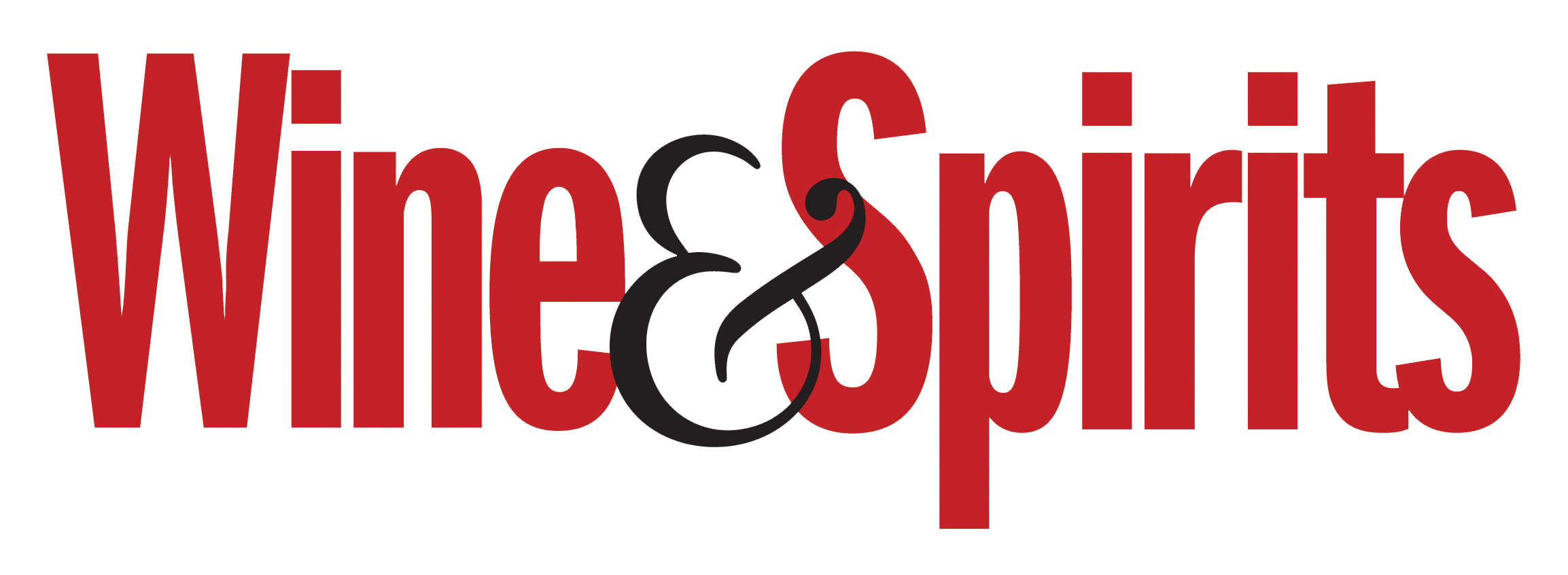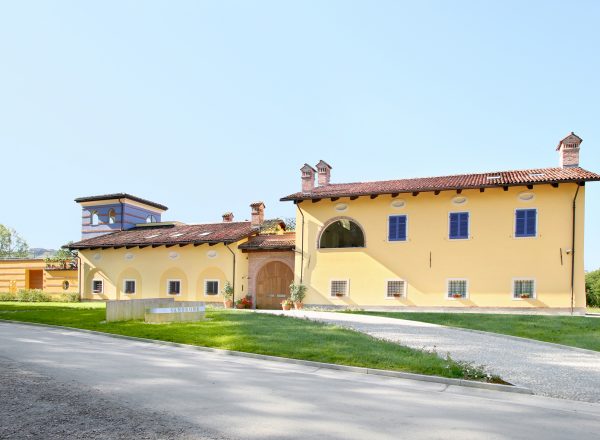
Sandrone
ALESTE Barolo 2017
Barolo
ALESTE is the natural continuity of Luciano’s first wine, the Barolo Cannubi Boschis, which garnered Luciano his early acclaim with the international trade and press. Giving all the experience, knowledge, patience and passion of his many harvests, Luciano pays tribute, with boldness and sensibility, to the next family generation: “ALESTE” is in fact the combination of the names of his grandchildren ALEssia and STEfano.
This single-vineyard wine is typically dense and concentrated but shows incredible harmony and balance. The medium-weight structure shows delightful and seductive notes of berries and cherries, with floral and mineral aspects. In great vintages, properly cellared examples will drink well for 20+ years. The finish is sweet and broad, with moderate, ripe tannins and long length.
VINEYARD

The vineyard is one of the great cru sites in Barolo, synonymous with richness and complexity. Sandrone’s ALESTE Barolo is grown on the soil of Cannubi Boschis, in a specific sub-section of the Cannubi hill. Cannubi extends north from the village of Barolo and has been planted to Nebbiolo on its south and east exposures for at least a century. It runs approximately southwest-northeast and is entirely inside the commune of Barolo, from which it displays the characteristics of wines from this village: profound aromatic complexity and comparatively softer tannins in relation to vines grown in Monforte or Serralunga. The “Boschis” subzone of the Cannubi (also known, historically, as Monghisolfo) is near the northern end of the hill, and is located directly across the little valley from the Sandrone winery building. The Cannubi Boschis subzone has a particularly good exposure to the south and southeast in a small bowl or “conca” that helps hold the warmth in the early morning. Its soils are sea deposits of calcareous clay, not very deep, with good drainage.
WINEMAKING

Each lot of the vineyard is vinified separately, and after destemming and light crushing, the must is covered with CO2 for a gentle warm maceration of approximately a day. Alcoholic fermentation begins about 24-36 hours later from native yeasts. A gentle maceration takes place in upright open-top steel tanks for the first 9-10 days of alcoholic fermentation. Immediately after alcoholic fermentation, which takes 28-30 days, malolactic fermentation takes place in 500 liter French oak casks. The wine is aged in these casks for 24 months, followed by 18 months of bottle aging. Around 800 cases are produced in a typical vintage.
VINTAGE

“Warm” and “dry” are the words that best describe the 2017 vintage. Alleviating the heat were the excellent diurnal temperature shifts that brought cool air during the night, which provided relief to the vines even in the hottest days of summer.
The mild winter led to early bud break, but an atypical return of cold in mid-April slowed down the vegetative cycle. During the periods of pre-flowering and flowering, the cold determined the formation of looser grape bunches with better internal air circulation. May brought warm, dry weather that remained until the end of August and led to early maturation.
The hot summer, with good diurnal temperature shifts, defined the ripening of the grapes. In particular, the veraison occurred very early.
In September, temperatures dropped, and growing patterns were nearer seasonal averages, with great differences between day and night temperatures. This benefited the polyphenolic profile of the red wine grapes with a medium-long vegetative cycle, such as Nebbiolo and Barbera, for which the data differed to those of other “hot” vintages. Indeed, the values observed this year are better in terms of both quantity and extractability, an essential factor in wines for ageing.
The 2017 vintage will be remembered as one of the earliest of recent years. It has given wines showing great promise considering the fears of the beginning of summer, confirming how well-suited the hills of the Langhe are for winegrowing.
Harvest took place from 21/09 to 12/10.
TASTING NOTE

The hot vegetative cycle of 2017 gave the Aleste Barolo a long, fruity and dense structure. There are the typical aromas of sweet red cherry and raspberry, with a touch of oak and complex balsamico notes.
On the palate, the wine fills the mouth, full and rich, ample, heady at the front, then structured at the center and finish. The red fruit flavors are deep and rich, as is typical for the site in a warmer year, then followed by a well structured mid palate with racy tannins that will need 4-6 years of bottle age to soften. The fruit impression is balanced by long and mineral finish with fine-grained tannins.
This prized site always gives us wines that are ripe, full and elegant – and 2017 is a great example for mid-term cellaring.
Color
Red
Appellation
Barolo
Farming
Follows organic farming but has chosen not to seek certification. Minimal quantities of Bordeaux mixture and sulfur (as allowed per organic practices) are used to control mold and fungus, and fertilization every 4-6 years occurs with composted manure from dairy cows.
Alcohol
14.5%
Suggested Retail Price
$175.00
Reviews
"Structure and finesse"

Wine Enthusiast - July 6, 2021
"Aromas of menthol, pressed rose, wild berry and grilled herb are front and center in this stunning wine along with a whiff of forest floor. Combining structure and finesse, the savory, full-bodied palate delivers juicy Marasca cherry, blood orange and licorice before an espresso finish. Firm, refined tannins provide tight support." - K.O.
"Very transparent and appealing"

James Suckling - June 17, 2021 "The purity and brightness of nebbiolo is so impressive here. Strawberries and blue fruit abound. Full-bodied, yet tight and very polished with a long, persistent finish. Very transparent and appealing." - J.S.
"Rose petal and lavender"

Wine & Spirits - December 13, 2021
"Aleste is dense and rich in this vintage, its dark cherry and black-raspberry fruit tones balanced by plenty of acidity and cool minerality. It opens with scents of rose petal and lavender, the dark fruit enveloped in a silky texture as the wine takes on notes of licorice and warm spice. A bit intense now, its balance and freshness suggest good aging potential." (S.J 12/21)
"Dark, ample wine"

Vinous - June 17, 2021
"The 2017 Barolo Aleste is a dark, ample wine. Dark cherry, plum, new leather, spice and licorice bring out darker tones of Nebbiolo. All the natural power of these parcels come through effortlessly. Best of all, the 2017 will drink well with minimal cellaring." - A.G.
Trade Materials
Other Wines by this Producer

Dolcetto d’Alba
Dolcetto d'Alba
Sandrone's Dolcetto d’Alba is produced using Dolcetto grapes from 11 different vineyards, all within the Barolo DOCG. Sandrone’s Dolcetto sees no time in wood and is a remarkably robust and complex example of the variety.

Le Vigne Barolo
Barolo
Le Vigne is a wine created from four different Nebbiolo vineyards, each of which brings its own contribution. This union generates an exceptionally complex wine that is round and harmonious on the palate, with fruity and spicy notes, and this approach of blending together plots is in fact the traditional one in Barolo.

Barbera d’Alba
Barbera d'Alba
The Sandrone Barbera d'Alba comes from three vineyards: Merli and Rocche di San Nicola in Novello, and Cascina Pe Mol in Monforte d’Alba. It is widely considered one of the most intense and complex Barberas produced.

Valmaggiore
Nebbiolo d'Alba
Valmaggiore is the product of Luciano’s incredible passion for the Nebbiolo grape variety and its different expression. Just 15 miles away from Barolo, in the Roero region, Nebbiolo produces a lighter structure and ripe, smooth tannins that are not unlike those of Pinot Noir. This is not a “baby Barolo” or a second wine at all – it is a distinct interpretation of Nebbiolo from a completely distinct geographic zone.









